Such as the care, predation and play that you've already seen as the pup grew up.
Or the terrific videos the Codger caught, that wonderfully show the foxes in action.
But along with all the great family photos, there were also a number of other random takes and extras that are too interesting not to talk about.
Some are basics, such as the just-popped-outta-the-burrow shake:
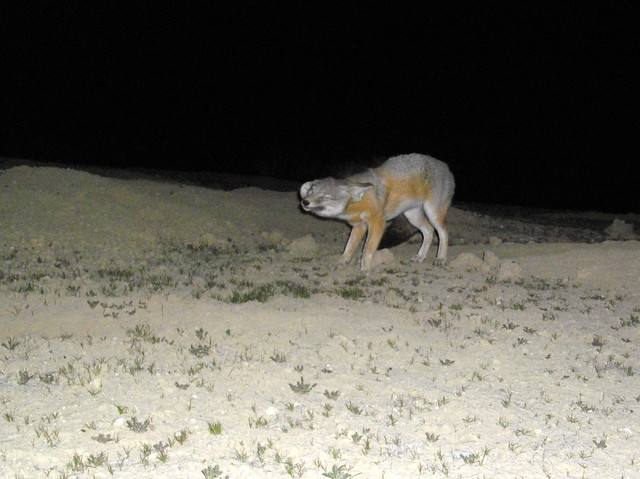
And the gettin' ready-to-chase-krats-all-night stretch, that I like because it shows their fuzzy feet, wide spread and strong claws - all good adaptations for hot sand and desert digging:
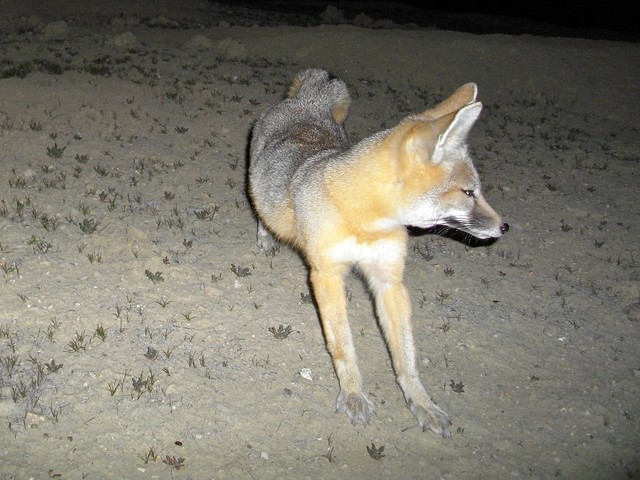
Another stretch with a yawn and a one-eyed jack in the background:
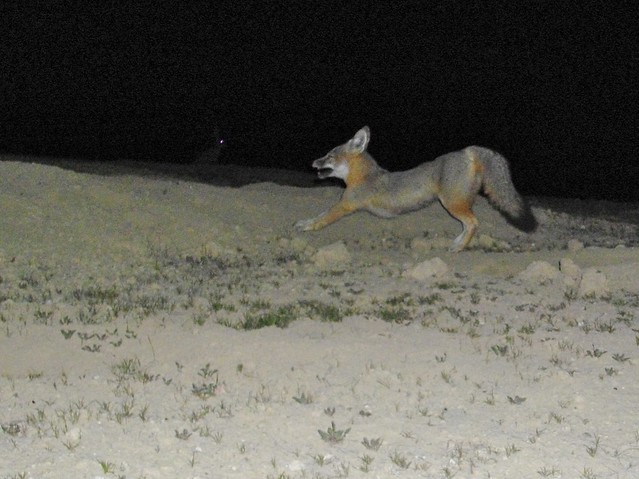
Speaking of jackrabbits, the previously posted kit fox 'n jack shot was popular not only with you dear readers, but with the kit fox biologists at CDFW and Cal State Stanislaus, too.
They said it almost looks like the big feisty bt jack is challenging the fox to a go.
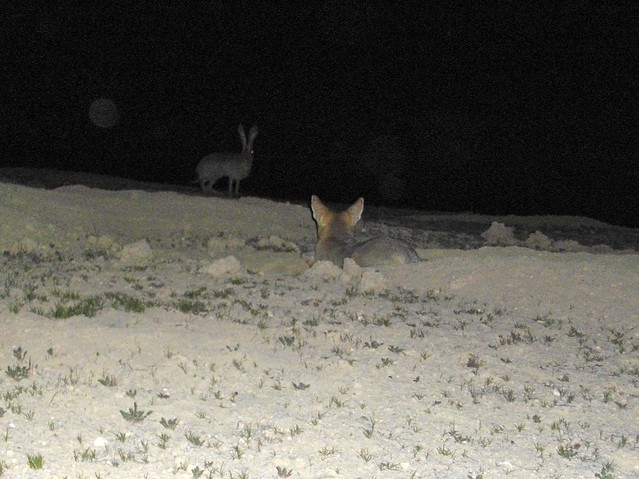
Here's a wacky series of 3 photos that span 2 minutes and 17 seconds:

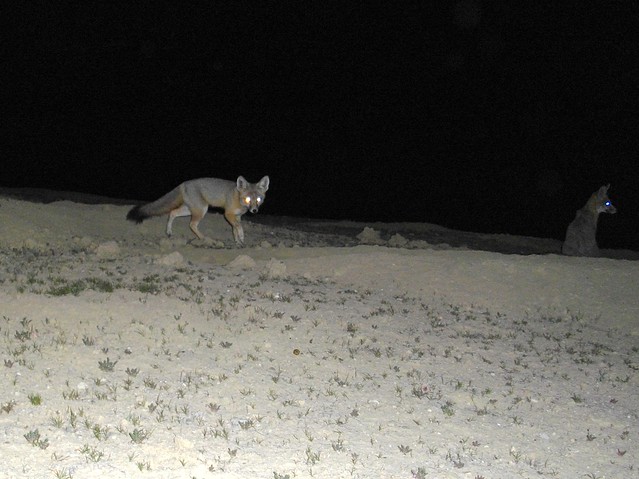
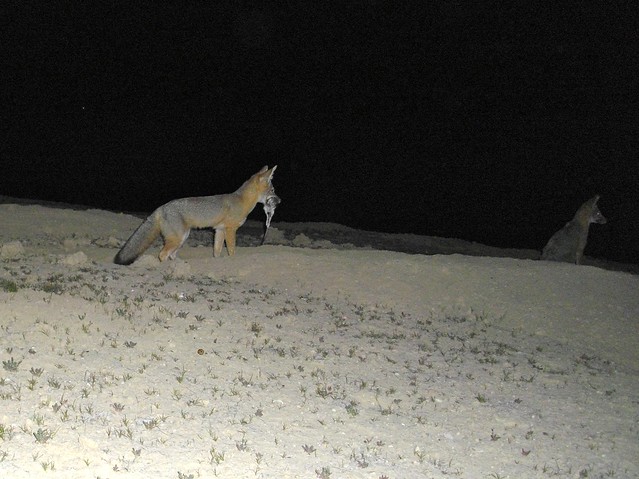
Where the heck did that k-rat come from? It's like it jumped into the fox's mouth.
But as I reported in the first kit fox post, the k-rats can be thick around those parts. This shot even caught 2 giant kangaroo rats foraging around the kit fox dens at the same time:
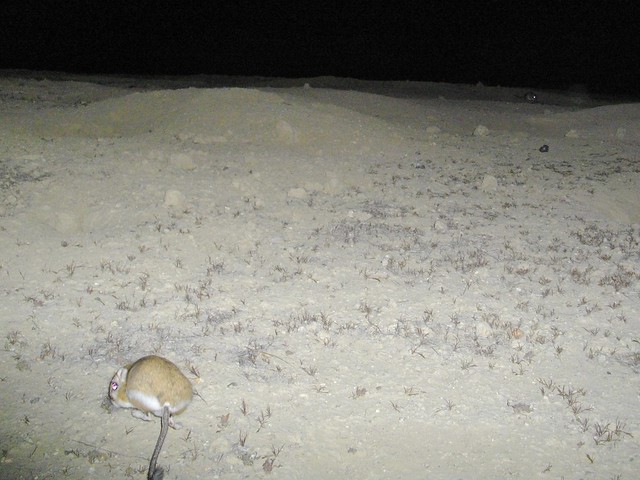
I found the marked size difference between the male and female San Joaquin kit foxes interesting (and useful). Kit foxes are said to exhibit little sexual dimorphism, but the Dad is much taller and leggier. And the Mom has such a cute pointy nose. Foxy lady.
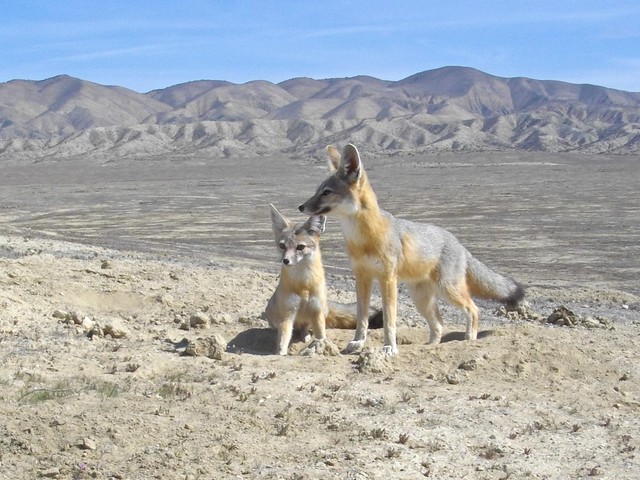
As far as behavior shots go, I also really, really like this photo:
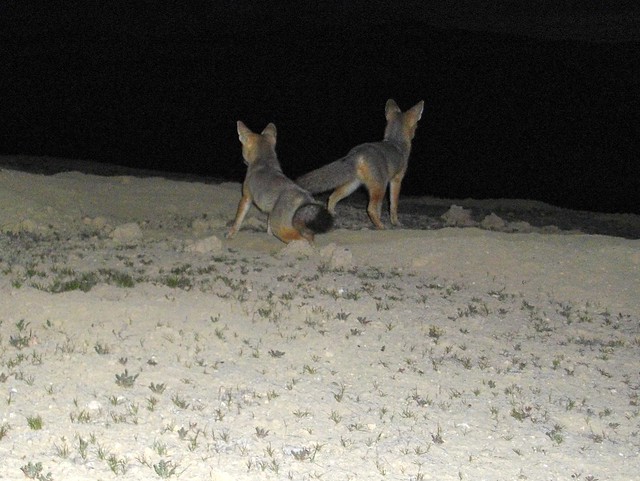
When I look at it, I can totally hear the coyotes howling.
Coyotes are pretty much the kit fox's biggest fear, and you can see it their body language - the tenseness of ears and tails, the wide stance and stiffness... There be coyotes out there.
"Ahhhh-oooooooohhhhhhh..."
The biologists enjoyed interpreting this photo:
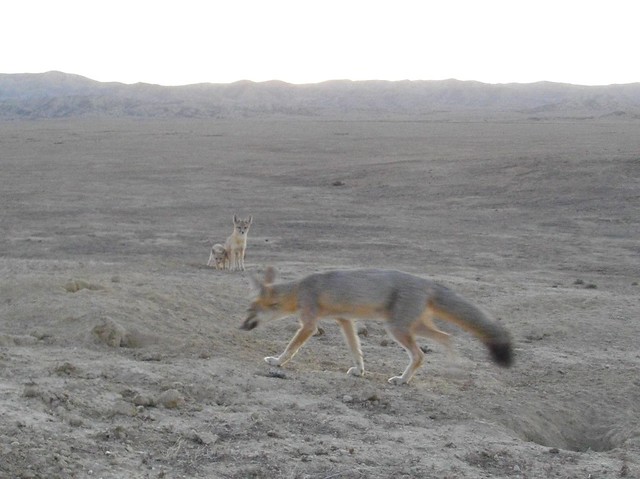
They said it's likely the family just returned from an outing and something seemed off, so Dad is checking out the den complex before Mom and the pup get near.
That Dad - such a gentleman. :)
Here's a funny series. A raven drops in to check out the cam trap, while a kit fox casually snoozes in the background...
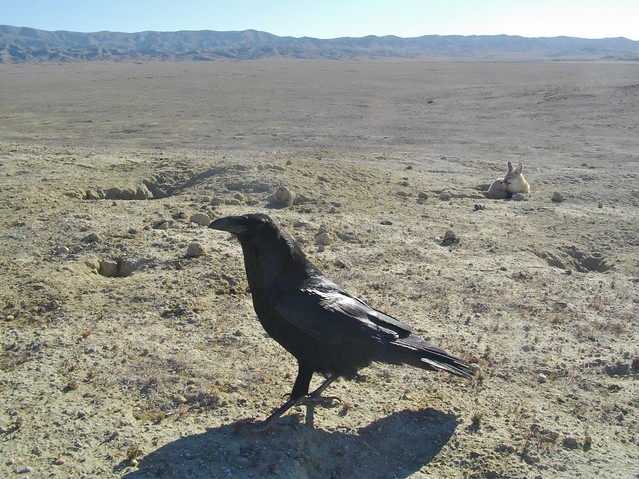

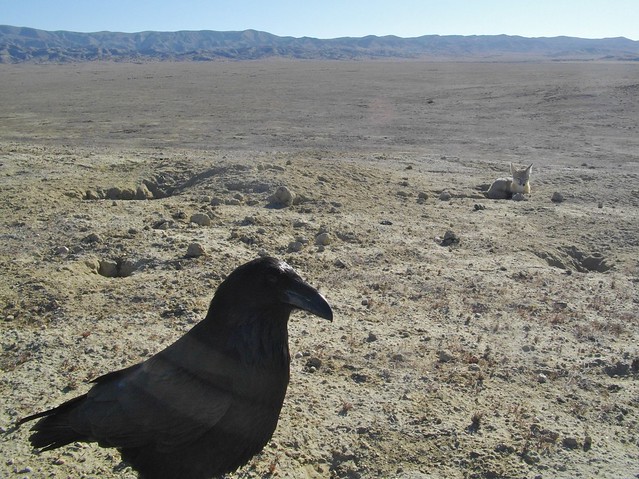
Ravens - scary smart.
When I set the camera trap with the Codger and Craig, I was hoping the kit foxes would give us some day time shots so the depth of the Carrizo landscape could be seen, including the Temblor Mountains in the far distance.
And boy did those lil doggies deliver.
You've seen many of the lucky shots already, but here's a few more at sunrises and sunsets that aren't so bad either.
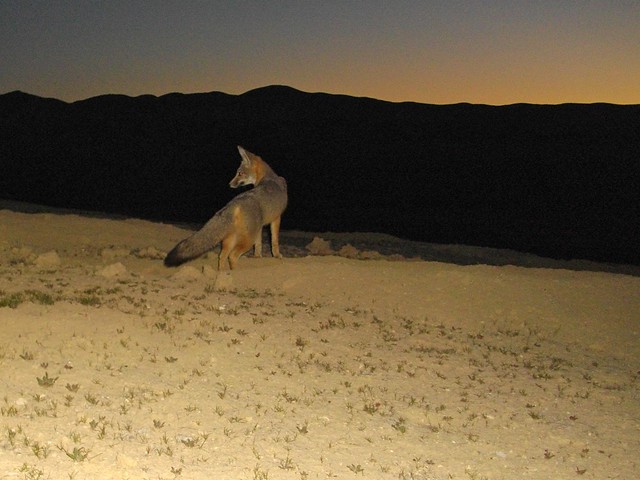
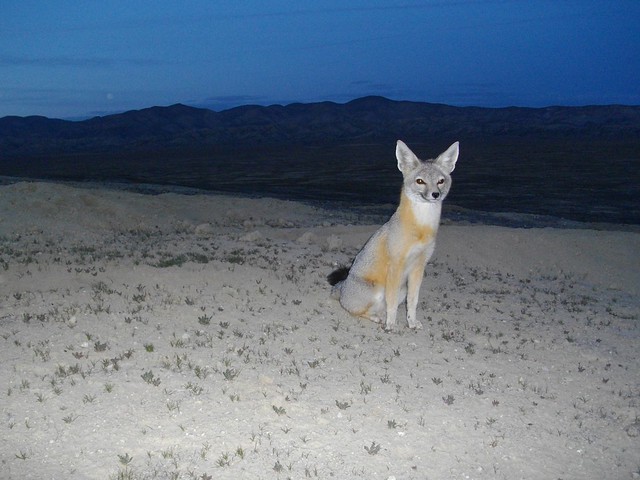


I also like the photos with the kit foxes sitting or lying down, and gazing across the plain:
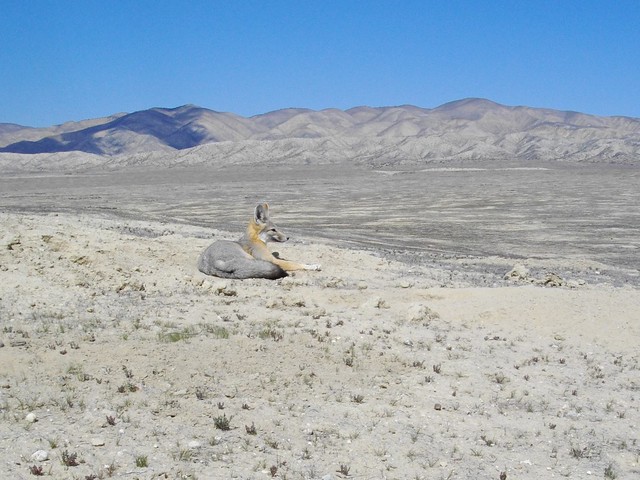
But at the end of it all, some of the shots I enjoy most are ones that remind me that kit foxes are basically little housecat-sized dogs, that live like ground squirrels in burrows, and pop up at night to hunt rodents and rabbits.
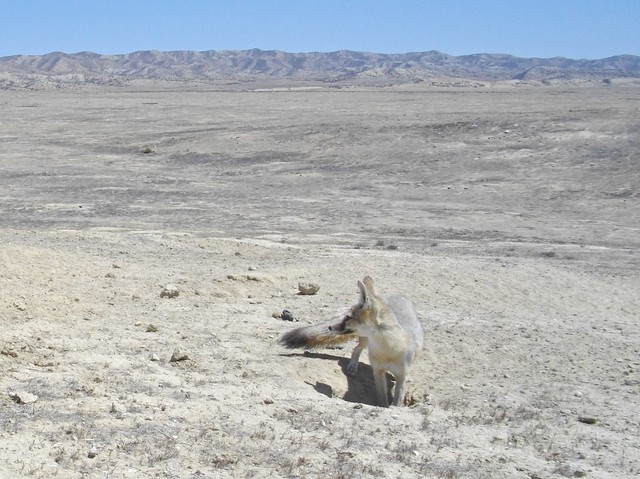
How can you not love a beautiful and benign animal like that? And not want to protect it and its habitat and resources?
Sure glad the gang at CDFW and Cal State University Stanislaus have their eyes on them.
Editor's note: this was post 3 of 3 of this kit fox family. The other two posts are here:
====
References:
- Nature of a Man (this blog) - The Terrible Twos
- Nature of a Man (this blog) - In a Family Way
- The Wasmann Journal of Biology, Vol 14, 1956 - Ernest C. Twisselmann - A Flora of the Temblor Range and the Neighboring Part of the San Joaquin Valley
- Natural Areas Journal, Vol 31, 2011 - David J. Germano, Department of Biology, California State University Bakersfield - The San Joaquin Desert of California: Ecologically Misunderstood and Overlooked
- CSU Stanislaus Endangered Species Recovery Program - San Joaquin Kit Fox
- CSU Stanislaus Endangered Species Recovery Program - Recovery Plan for San Joaquin Kit Fox
- CSU Stanislaus Endangered Species Recovery Program - Giant Kangaroo Rat

These pictures are soothing to the soul. Here I sit on the 5th floor of my state's environmental agency, working on cleaning up some data to be analyzed- as far from wildlife as you can be in "the field"...and then I take a break to catch up on blogs. Lovely shots, the closest I have to a kit is the gray out here in NY, one of my all time favorite critters!
ReplyDeleteGlad the foxes were able to give you a respite from the urban jungle Alyssa.
DeleteSo among you pro cam trappers, are there arguments about how much behavior info you can interpret from photos and even videos? Last year, I would have been skeptical but after looking at so many lion photos in the past few months taken at basically the same spots, I just gotta believe that my interpretation skills are improving. Or my imagination. That middle photo of the two alert fox parents sure looks like they are on guard even the way they are facing different directions. And if you as a biologist have been wandering around those plains looking at other sign, then I would guess your knowledge of potential predators is good enough to interpret that photo as a response to coyote howling.
ReplyDeleteMuch like IDing flowers or birds with photos, there's always uncertainty and disagreements. And a few life-long feuds. ;)
DeleteYour cam trapper's gestalt is definitely getting better and better with each set you do. And the more you learn about the animals you trap. It's amazing how our brains can do that. It's the same thing that defines a good tracker. Or spotlighter - I did a spotlight survey with a veteran biologist and at 100 yards with but a glance he could call the species. Purely by the separation of the eyes, the height off the ground, the color of the shine and the action of the animal when spotted.
Of course, the kit foxes could be hearing something else. Perhaps a small group of pronghorn are going by in the dark. Or there's a spotlight poacher driving around. But my current level of gestalt leans towards yotes.
Great pictures.
ReplyDeleteI just came upon this blog post. These images and behavioral comments are simply wonderful, thank you. I have yet to see a kit fox in the wild, and would absolutely love that experience.
ReplyDeletegreat pictures.
ReplyDelete